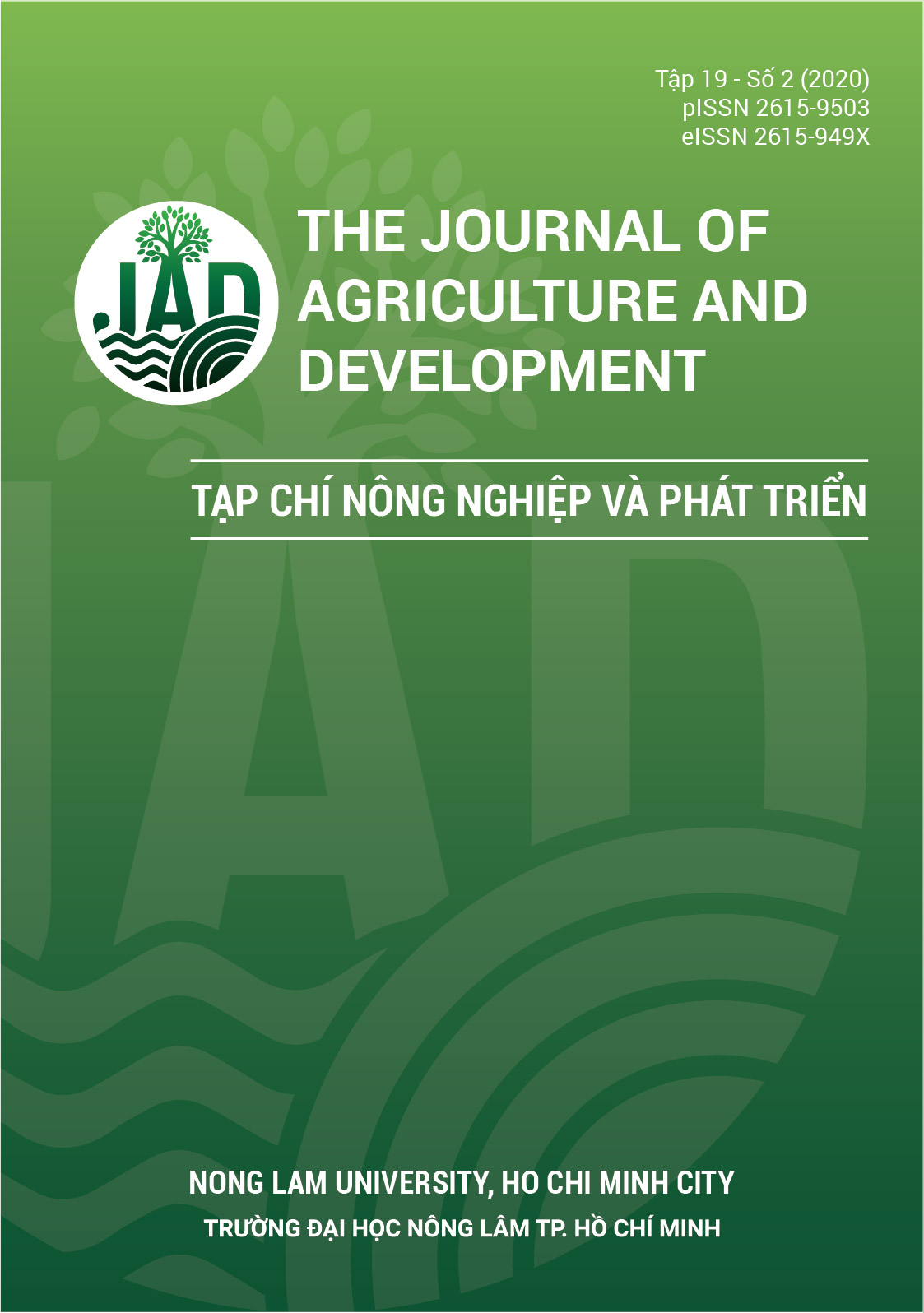Nghiên cứu chế biến nước giải khát lên men từ quả sơ ri
Main Article Content
Tóm tắt
Nước trái cây lên men có giá trị dinh dưỡng cao trong đó mùi thơm và hương vị đặc trưng của nguyên liệu làm tăng giá trị cảm quan cho sản phẩm, thường được bảo quản lạnh sau khi chế biến. Nghiên cứu được tiến hành trên dịch quả sơ ri, ở hàm lượng chất khô 18oBrix, pH 4,0; tỉ lệ men giống bổ sung 0,20%; lên men trong 3 ngày ở nhiệt độ phòng. Sản phẩm thu được có hàm lượng chất khô 7,2 ± 0,8oBx; hàm lượng cồn 1,4% v/v; hàm lượng vitamin C 581,2 mg%; pH 3,1.
Article Details
Tài liệu tham khảo
Bui, A. (2005).Fermentation technology applied in foodtechnology(2nd ed.). Ho Chi Minh City, Vietnam: National University Ho Chi Minh City.
Mathew, B., Datsugwai, M. S. S., David, E. S., & Harriet, U. (2017).Production of wine from fermentation of Grape (Vitis vinifera) and sweet orange (Citrus seninsis) juiceusingSaccharomyces cerevisiaeisolated from palmwine. International Journal of Current Microbiologyand Applied Sciences 6(1), 868-881. http://dx.doi.org/10.20546/ijcmas.2017.601.103
Nguyen, T. D., & Nguyen, H. T. (2007). Technology formanufacturing and testing ethyl alcohol (3rded.). HaNoi, Vietnam: Science and Technics Publishing House.
Oliveira, L. S., Rufino, M. S., Moura, C. F., Cavalcanti, F. R., Alves, R. E., & Miranda, M. R. (2010). The influence ofprocessing and long-term storage on the antioxidantmetabolism of acerola (Malpighia emarginata) purée. Brazilian Journal of Plant Physiology 23(2), 151-160. https://doi.org/10.1590/S1677-04202011000200007
Righetto, M. A., Netto, F. M., & Carraro, F. (2005). Chemical composition and antioxidant activity of juices frommature and immature acerola (Malpighia emarginataDC). Food Science and Technology International11 (4), 315-321. https://doi.org/10.1177/1082013205056785
Saranraj, P., Sivasakthivelan, P., & Naveen, M. (2017).Fermentation of fruit wine and its quality analysis: Areview. Australian Journal of Science and Technology 1(2), 85-97.
Simopoulos, A. P., & Gopalan, C. (2003). Plants in human health and nutrition policy. Basel, Switzerland:Karger. https://doi.org/10.1159/isbn.978-3-318-00954-5
Souza, P. A., Naik, P. A., Rao, S. C., Vyas, S., Palan,A. M., Cornelio, B., Shet, V. B., & Rao, C. V. (2017).Fermented fruit juice production using unconventionalseasonal fruits through batch fermentation. Journal of Microbiology, Biotechnology and Food Sciences 6(6),1305-1308. https://doi.org/10.15414/jmbfs.2017.6.6.1305-1308
Vendramini, A., & Trugo, L., (2000). Chemical composi-tion of acerola fruit (Malpighia punicifolia L.) at threestages of maturity. Food Chemistry 71(2), 195-198. https://doi.org/10.1016/S0308-8146(00)00152-7








